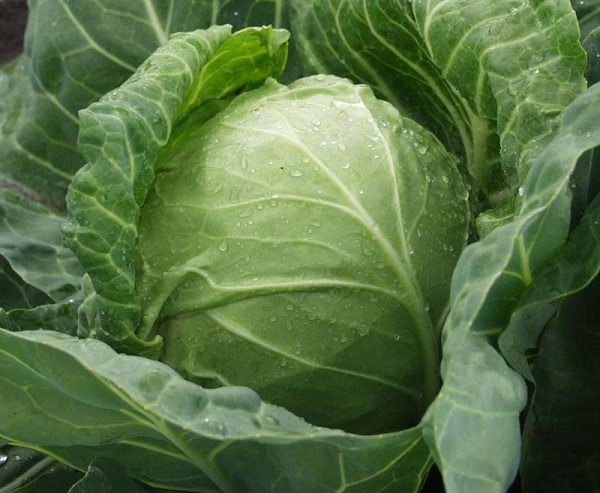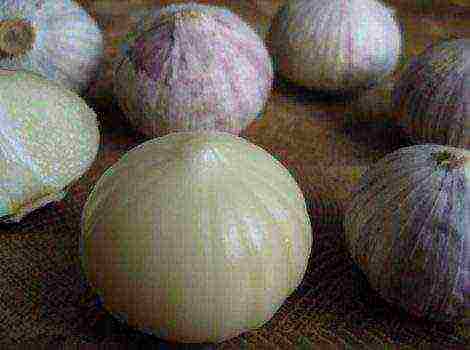Content
- 1 Detailed description and characteristics of the June cabbage variety
- 1.1 Characteristics and botanical description of the variety
- 1.2 Advantages and disadvantages of the variety
- 1.3 The timing of planting vegetable crops for seedlings
- 1.4 Growing conditions for June cabbage
- 1.5 Preparing the soil for cultivation
- 1.6 The main aspects of planting cabbage in open ground
- 1.7 Proper care after planting
- 1.8 Diseases and their prevention
- 1.9 Harvesting and storage rules
Detailed description and characteristics of the June cabbage variety
June refers to the old, time-tested varieties of White cabbage. Breeding work on the creation of an ultra-early variety, which is particularly resistant to spring frosts, was carried out in 1967 by employees of the All-Russian Research Institute of Vegetable Breeding.
Characteristics and botanical description of the variety
June cabbage belongs to the early varieties. The duration of the period from germination to technical ripeness is 92-100 days.
The plant has a compact leaf rosette, which is raised and has a diameter of 40-50 cm. The leaves are green, solid, with a slight waxy bloom, the edges of the leaf plates are slightly wavy.
A powerful and large plant forms spherical heads of medium density. Outside, the color is light green, on the cut it has a light green tint. Internal stump of moderate length. Heads of cabbage are characterized by juiciness, uniformity and weight from 1.2 to 2.5 kg. The product contains dry matter in the amount of 8.1%, sugars - up to 3.8% and ascorbic acid - 45 mg%.

Advantages and disadvantages of the variety
The advantages, thanks to which the variety is in good demand among gardeners, include:
- stable and high yields, which are up to 6 kg per 1 sq. m;
- friendly ripening of fruits, which allows growing crops for early marketable products;
- good consumer taste and tender structure of vegetables;
- the ability of seedlings to tolerate low temperatures;
- a source of nutrients, especially vitamin C.
In addition to the positive characteristics, there are also disadvantages of the variety, namely;
- tendency to cracking heads, therefore, requires harvesting in due time;
- low keeping rates, which are typical for all early varieties;
- vegetables are for fresh consumption only and are not suitable for fermentation.
The timing of planting vegetable crops for seedlings
Cabbage seed does not require any special preparation. When choosing the time for sowing, it is required to calculate when to plant cabbage for seedlings so that in June it will be possible to cut the first fork. Cabbage should be planted at a certain time, but depending on the climate conditions of the region: from early March to May. If you sow cabbage in early March, then plant it in a permanent place at the end of April, otherwise the seedlings will outgrow, which will negatively affect its fruiting.
For an early harvest with the least effort, knowledgeable gardeners recommend sowing the crop at the end of March. Then, planting seedlings can be carried out in the first decade of May. This period is considered traditional for planting seedlings in the ground in regions with a temperate climate.

Growing conditions for June cabbage
Planting a crop begins with the selection of a site that should be well-lit by the rays of the sun throughout the day. The best option would be to set aside a place that is level or with small slopes to the south and southeast.
The culture prefers fertile, loamy soil.If the soil is acidic, then it must be subjected to liming, since at a pH of less than 6.0, cabbage is not able to set heads of cabbage, and is highly susceptible to keel.
Preparing the soil for cultivation
When growing cabbage, it must be borne in mind that soil preparation is of great importance in order to obtain a generous guaranteed harvest. The plant is demanding on the structure and fertility of the soil. Therefore, for planting, you need to use only fertilized soil and this should be done in advance.
For these purposes, the territory allocated for planting must be dug up with a shovel in the fall and equipped with humus and ash, which is considered a good antiseptic to prevent the development of decay. Do not forget about mineral fertilizers, and add superphosphate and potassium chloride to the soil. With the onset of spring, loosen the site and also add a complex of nutrients.

The main aspects of planting cabbage in open ground
When the weather is favorable, you can plant seedlings. Plants should have four true leaves before planting. Seedlings should not be buried in the holes very deeply along the first true leaf and, trying not to damage the root system. It is impossible to fill up the growth point. Compact the soil around the cabbage and water thoroughly.
Proper care after planting
The plant requires a lot of attention from the gardener, constant care and providing favorable conditions for growth. For the full development and obtaining a decent harvest of cabbage, it is necessary to perform the following set of measures:
- protect immature seedlings from direct sunlight, since the variety does not tolerate extreme heat;
- for a week after planting, spray young plants with water three times a day using a watering can;
- keep cabbage beds clean, removing weeds and hilling growing plants;
- to carry out high-quality watering on time, since the culture really needs moisture, and the slightest drying out of the earthen coma leads to the stiffening of the stump and the cessation of the growth of the root system;
- provide growing cabbage with nutrients by applying complex organic and mineral fertilizers;
- inspect the plant for the appearance of insects, not missing the moment when their population begins to actively develop, and in case of a problem, do not use chemistry, but give preference to a folk or biological agent.
Proper care ensures that high quality vegetables arrive early.

Diseases and their prevention
Cabbage, like any vegetable crop, is exposed to a huge number of pests and diseases and requires appropriate control measures.
| DISEASES | |||
| Name | Description | Control measures | |
| Keela | The presence of growths on the root system that prevent small roots from developing | Remove and burn diseased specimens, disinfect the soil with disinfectants and
do not plant cabbage in this place for 4 years. |
|
| Fusarium wilting | Yellowing and wilting of leaves, which subsequently fall off, leaving a bare trunk with a rosette of leaves at the crown. As a result, under the influence of infection, the growth of the plant stops. | The disease is not amenable to treatment. To prevent the infection from spreading, remove diseased plants from the garden along with an earthen lump.
|
|
| Blackleg | The thin root collar and base of the stem turn black and begin to rot, due to which the plant stops developing and subsequently dies | An infected plant cannot be treated, it must be removed from the garden and burned and disinfected with appropriate preparations | |
| Pests | |||
| Cruciferous bugs | Insects pierce the skin of the crop and suck the juice from the leaves, while the leaves curl and the plant dies | If the culture is affected in the initial stages, you need to fight using time-tested folk remedies. With a strong multiplication of parasites, you need to fight them with chemicals
|
|
| Cabbage aphid | A green insect attacks the plant, weakens it, which disrupts metabolic processes | ||
Compliance with all norms of agricultural technology for growing conditions will allow plants to actively and successfully resist pathogens and dangerous insects.
- Keela cabbage
- Fusarium wilting
- Black leg of cabbage seedlings
- Cruciferous bug
- Cabbage aphid
Harvesting and storage rules
According to the description of the variety, heads of cabbage ripen at the same time at the end of June, after 55-60 days after transplanting. It is possible to determine the readiness of a crop for harvesting by external signs. If the head of the vegetable is solid and has reached the required size, then you can start harvesting. Also, a signal for harvesting is the yellowing of the outer lower leaves in mature vegetables, which indicates the completion of the growth process and storage of nutrients.
It is advisable to collect in the morning in dry cool weather. Cut the vegetables carefully using a sharp knife. In this case, you need to leave three leaves and a stump 2 cm long.
June cabbage cannot be stored for a long time. It is intended to be eaten no later than 2 weeks after harvesting.
To obtain quality products, you need to make some effort, as well as to know certain features of this culture. It is important to provide the cabbage with comfortable conditions and in June to enjoy the excellent taste of a healthy and fresh vegetable.


